Overfishing is considered to be the greatest single threat to marine wildlife and habitats, with many fish stocks in a state of serious decline.
Consumers can play a crucial part in preserving the life in our oceans by knowing which fish to avoid, and substituting these with fish from sustainably managed stocks that are caught or farmed in ways that cause minimum damage to the marine environment.
Supermarkets are making it easier for consumers to choose fish by providing more detailed information on their labels about where and how fish have been caught. Make sure you look out for the "blue tick" logo from the Marine Stewardship Council which certifies that the fish has come from a sustainable and well-managed fishery.
To help you out, here is a pictured list of UK and European fish that should never pass your lips, and tasty, sustainable alternatives you can choose instead.
Fish to avoid eating
These are the fish that the MCS believes are most vulnerable to over-fishing and/or are fished using methods which cause damage to the environment or and other species.
Atlantic and North Sea cod
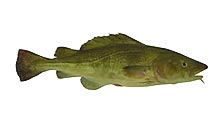
All north-east Atlantic cod stocks are assessed as being overfished, however stocks in the North Sea, Irish Sea, West of Scotland, eastern Channel, eastern Baltic, Greenland, Skaggerak, Kattegat and Norwegian coast are the most heavily depleted.
North-east Arctic, Icelandic and Faroese cod stocks are healthier, but scientists still recommend that fishing pressure on these stocks also be reduced. Avoid eating cod from stocks which are depleted and where fishing levels are unsustainable. To help reduce the impact of fishing on other marine species choose cod which is caught using the sustainable traditional fishing method of hook and line, make sure that it is caught using "seabird-friendly" methods as longline fishing can result in seabird by-catch.
Atlantic halibut
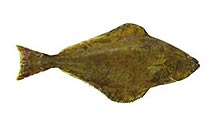
Atlantic halibut is a thick-set, flat fish with both eyes on the right-hand side of the body. It lives in deep, cold waters and is slow-growing.
Atlantic halibut is overfished, which means it is caught in such high numbers that a sustainable fishery cannot be maintained by the current population size.
It is also assessed by the IUCN World Conservation Union as endangered.
Dogfish
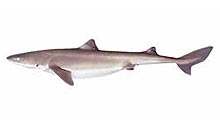
Spiny dogfish, spurdog, rock salmon or flake are all species of dogfish, which belong to the same family as sharks and rays.
Spurdogs are long-lived, slow growing and have a high age of maturity. These characteristics make them particularly vulnerable to high levels of fishing mortality. The north-east Atlantic stock is now considered to be depleted and may be in danger of collapse. Species also assessed as critically endangered by the IUCN.
European eel
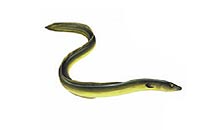
Eels spawn in the sea and return to freshwater streams to grow. The European eel breeds in the mid-Atlantic Sargasso Sea.
There is one single European eel stock. This is severely depleted and at a historical minimum which continues to decline. Eels are exploited in all life stages and those that are fished do not have the chance to breed. Eels spawn only once in their lifetime and it is almost certain they die after spawning. Eels are also farmed but rely on juveniles from wild stocks.
European hake
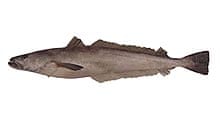
There are two main stocks for European hake - a northern and southern stock. The northern stock is below the minimum biomass level recommended by marine scientists but harvested sustainably, and the southern stock is depleted. Avoid eating hake from depleted stocks and immature fish below about 50cms and during their breeding season, which is February to July.
Porbeagle
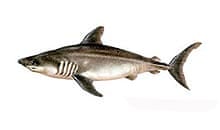
Porbeagle is part of a group of sharks known collectively as mackerel sharks.
Sharks are vulnerable to exploitation because they are slow-growing, long-lived, and have low reproductive capacity. Porbeagle is assessed as critically endangered by the IUCN. Its north Atlantic population was seriously over-exploited by directed long-line fisheries up until the 1970s, when they became unprofitable. Since then there have been sporadic targeted fisheries for porbeagle and they are also caught as bycatch.
You should avoid eating any species of shark, which are caught not only for their meat but also for their fins. Shark-finning, for the Asian shark-fin soup market, is a wasteful and barbaric technique where fins are hacked off and sharks thrown back into the sea to die.
Plaice

Plaice is a long-lived species and subject to high fishing pressure. Stocks in the Celtic Sea, western Channel, south-west Ireland and the west of Ireland are in decline and substantial reductions in fishing efforts are required to achieve sustainable stock levels.
Large numbers of undersized plaice are discarded in particular in areas of the southern North Sea that are trawled for sole and plaice. The Irish Sea stock is currently the only stock classified as healthy and harvested sustainably. Avoid eating immature plaice below 30cm and during their breeding season, from January to March.
Seabass
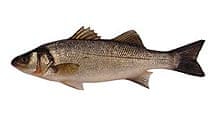
You should avoid eating seabass captured by nets that trawl the bottom of the sea. These fisheries target spawning and pre-spawning fish, are responsible for high levels of dolphin by-catch, and deplete stocks available for inshore and recreational fisheries. Choose line or net-caught fish, and ensure that nets are dolphin-friendly.
Line-caught seabass is a more sustainable choice. Choose fish which has been sustainably caught by handlining methods in the south-west of England, which is identified by a tag in its gill.
Skate

The common skate is the largest European flat fish, with females reaching lengths of 285cm and males 205cm. They are found in the north-east Atlantic from Madeira and northern Morocco to Iceland and northern Norway.
Common, long-nose, black and white skate are all endangered species. The common skate belies its name as it is becoming very rare in UK shallow seas and in European waters, and has been assessed as critically endangered by the IUCN.
Sole
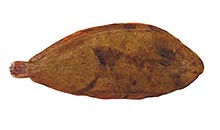
North Sea Dover or common sole stock is classified as healthy and harvested sustainably. Stocks in Skaggerak and Kattegat, the Eastern Channel and Celtic Sea are also healthy but the level of fishing pressure is considered too high or unknown. Stocks in the Western Channel and Biscay are below the minimum level recommended by scientists and harvested unsustainably.
Avoid eating fish caught in these areas, as well as south-west Ireland, where the state of the stock is unknown and catches the lowest on record. Dover sole from the Hastings Fleet trammel net fishery in the Eastern Channel is certified as an environmentally responsible fishery. Avoid eating immature sole (less than 28cm) and fish caught during the breeding season (April-June).
Whitebait
Whitebait are the fry (young) of herring and sprat. As with any fishery's future, sustainability relies on young fish being allowed to mature and reproduce to maintain the population. Taking juveniles before they have a chance to spawn undermines future sustainability.